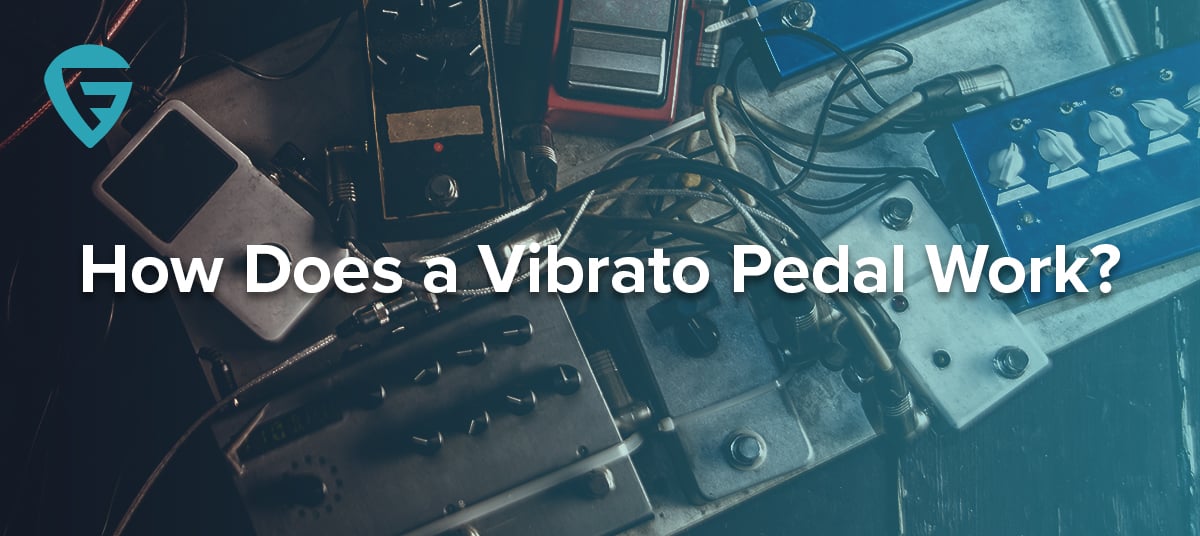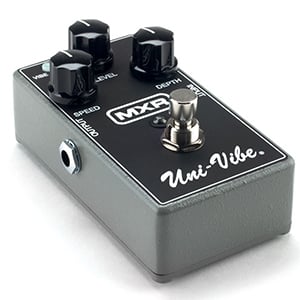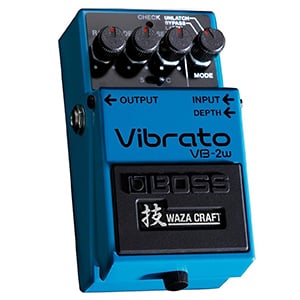- Home
- Instruments
- Gear
- Recording
- Lessons
- Reviews
- Blog

The advent of guitar effects pedals has completely changed the way we perceive music, and that doesn't only apply to rock or guitar related genres. Guitar effects pedals have had a profound influence on other types of music as well. With that said, there are some effects that have appeared early on, and thus became legendary due to the impact they have had at the time. Can you imagine living in a world where you only have one or two guitar effects available?
Chances are you would be finding ways to exploit those effects the best you possibly can. One such guitar effect is vibrato. Vibrato first appeared in certain amplifiers as a built-in feature. Needless to say, it didn't take long before it completely swept over the music industry, creating a demand for a standalone version of this effect. That became available a bit later, and people were starting to experience guitar effects pedals for the first time. What we want to know today is how does a vibrato pedal work?
 In general terms, vibrato belongs to the modulation effect family, or to be more specific, to its pitch shifter subdivision. Other pitch shifter pedals include chorus, flanger and similar. However, vibrato stood out due to how familiar its effect was to an average guitar player. You know that sound you get when you start working the tremolo bar on your guitar? That is exactly what vibrato does for your signal. Speaking of which, don't confuse tremolo pedals and vibrato pedals. There is a significant difference which you can read all about in our article that deals with that subject in depth ‘Difference Between Vibrato and Tremolo'.
In general terms, vibrato belongs to the modulation effect family, or to be more specific, to its pitch shifter subdivision. Other pitch shifter pedals include chorus, flanger and similar. However, vibrato stood out due to how familiar its effect was to an average guitar player. You know that sound you get when you start working the tremolo bar on your guitar? That is exactly what vibrato does for your signal. Speaking of which, don't confuse tremolo pedals and vibrato pedals. There is a significant difference which you can read all about in our article that deals with that subject in depth ‘Difference Between Vibrato and Tremolo'.
A vibrato pedal takes the input signal from your guitar and then shifts the pitch of the note you are playing at that moment. This modulation has several dimensions. Not only can you adjust the speed, or frequency of the wave, but you can also adjust how far the pitch is going to be shifted. For the most part, vibratos are the simplest form of pitch shifting pedals you can find.
One great thing about vibratos is that you can change the nature of the modulation in ways that can have subtle or profound impact on your tone. For example, you can create a really light whammy bar effect, that just barely changes the pitch of your tone, or you can go flat out and get some pretty interesting results.
 Aside from being able to adjust the Speed and Depth parts of vibrato, some of the most versatile vibrato pedals will also allow you to adjust what is called Rise. Rise determines the amount of time it is going to take the vibrato to go from the source pitch of the note you just played, to the full de-tune of that note. This control alone adds a whole new dimension to work with.
Aside from being able to adjust the Speed and Depth parts of vibrato, some of the most versatile vibrato pedals will also allow you to adjust what is called Rise. Rise determines the amount of time it is going to take the vibrato to go from the source pitch of the note you just played, to the full de-tune of that note. This control alone adds a whole new dimension to work with.
Moving on, we see several modes of operation. The most common ones are Latched, Unlatched and Bypass. Bypass is pretty self explanatory, so let's move on to Latched and Unlatched. When you use the former, the pedal will activate only as long as your foot is pressing that switch. No matter how trivial it may sound, this feature is actually among the most useful ones you can have on a vibrato pedal. Unlatched mode is your standard mode where you press once to activate the pedal, and the once again to turn it off.
When you look at vibratos in general, you can see right away that these are very simple pedals that have only recently been upgraded with loads of different features. The original ones offered a core performance and nothing more. Surprisingly, despite the rather saturated market for this type of guitar effect, a lot of users are turning towards the old school, no-nonsense vibrato stompboxes. Whether it is related to most of these being analog, or just their overall ease of use is unknown. Everyone has their own taste and set of requirements they are looking to fulfill.
If you are new to pitch shifter pedals, a decent vibrato stompbox is a great place to start. This effect can teach you how pitch shifters work in general, and allow you to get familiarized with that type of modulation. With that in mind, a vibrato is one of those neutral pedals that can be used with both acoustic electric and electric guitars with the same amount of success. You can more or less spice up your tone even if this is the only pedal you can get at the moment. Starting simple is always a good way to get yourself into just about any technology, and the same applies to modulation pedals.

Reader Interactions